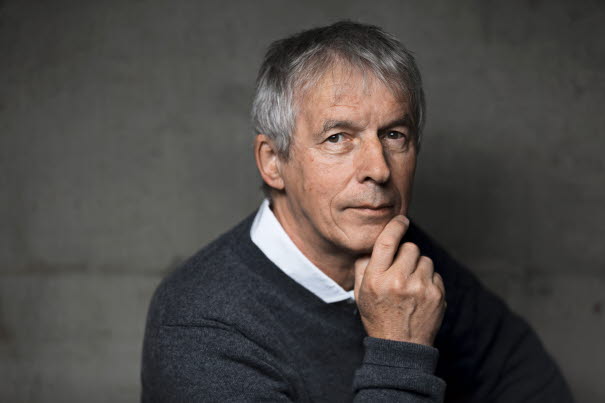Award Diploma 2021
The Astrid Lindgren Memorial Award comes not only with substantial prize money, but also with a framed diploma. We commission a different Swedish illustrator each year to create the diploma. The diploma for the 2021 laureate Jean-Claude Mourlevat was illustrated by Kristin Lidström and features calligraphy by Henning Trollbäck.
Kristin Lidström has been a freelance illustrator and book designer for nearly a decade. She describes herself as a “picture person who likes words.” Henning Trollbäck is an artist and works as an illustrator and graphic designer.
What was your reaction to receiving the commission for this year’s diploma?
Kristin: ‘I was honored and surprised. Still, I tried to treat it like any other assignment, I guess. I didn’t want to wind up in a creative crisis. I guess that’s something I’ve learned through experience. Don’t stress too much about prestigious assignments. Just keep on working and thinking as you usually do.’
Henning: ‘It was an honor! I was delighted to be commissioned as a calligrapher. This was actually my first pure calligraphy assignment. I enjoyed the opportunity to create a piece by hand that didn’t have to get processed on the computer and sent to the printer. Plus, just like when you do a book cover, it’s fun to get the chance to interpret an author’s work.’
What was your impression of Jean-Claude Mourlevat after reading his books?
Kristin: ‘What struck me most about the stories I read was that they were all different, yet all revolved around similar themes of good and evil. He has a way of using familiar territory to make us question our established ways of thinking about life. Very interesting to read and to think about in visual terms.’
Henning: ‘An incredible reading experience. He comes across to me as a real storyteller who possesses both depth and beautiful language, as well as a great humanist and a writer of major artistic ambition. I’m looking forward to being able to read his books with my children in Swedish.’
How did you approach the assignment?
Kristin: ‘I tried to figure out the requirements and any boundaries I would have to stay within. It turned out to be a pretty free assignment – which, paradoxically, is usually harder. But after reading some of Jean-Claude’s works, I began to develop a feel for his style and his subject matter. I needed to narrow him down, so to speak, in order to start thinking pictorially. I went from words to pictures, which is my usual way. To represent Jean-Claude’s universe, I wanted to come up with images that were symbolically strong and conveyed a sense of dualism. I didn’t want to create a logical narrative, or a specific scene from any of the stories.’
Henning: ‘I pulled out all my old books of typography and handwriting. I love to take inspiration from history. For Jean-Claude Mourlevat’s name, I used a medieval script called “Italian rotunda”. I also sought some advice from a master calligrapher named Marianne Pettersson-Soold, a wonderful educator and a lovely person who is generous about sharing tips. Finding time for the assignment was a bit tricky, since I was on parental leave. But there are some assignments you just can’t turn down.’
Could you describe for us what we see in the picture?
Kristin: ‘For the main element of the image, I chose to focus on the book itself, or reading, which is a theme in many of Jean-Claude’s stories. The picture shows both belowground and aboveground, and has an organic outer shape. The flowers in the picture stretch upwards, symbolising the beauty of life. Below, a scarab beetle (in reference to the book Terrienne) emerges from its burrow, which is surrounded by men bearing weapons.’
